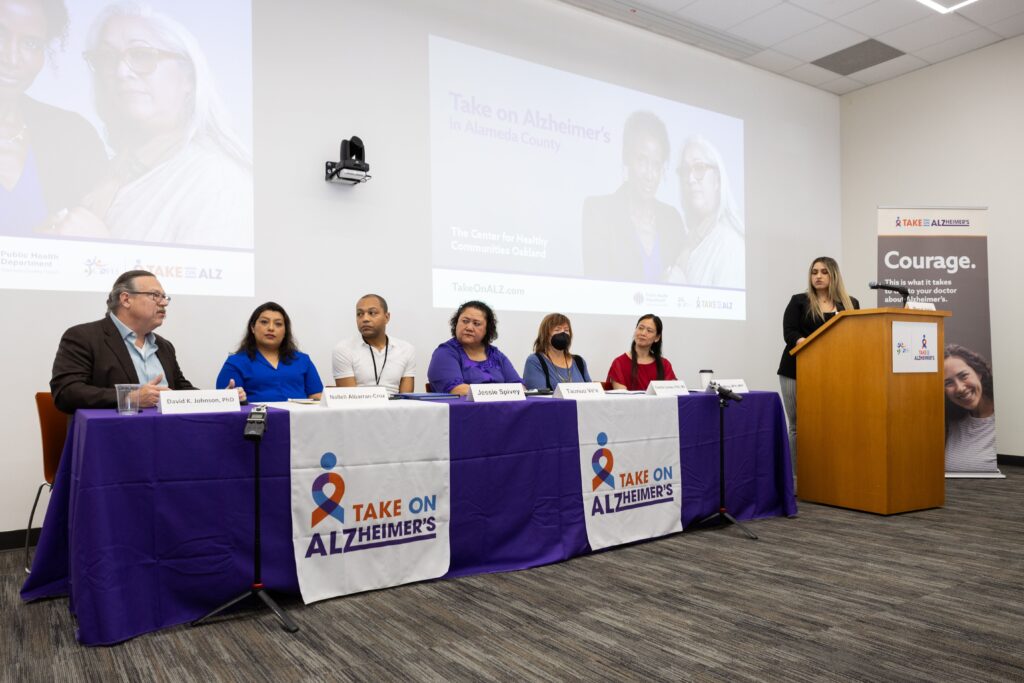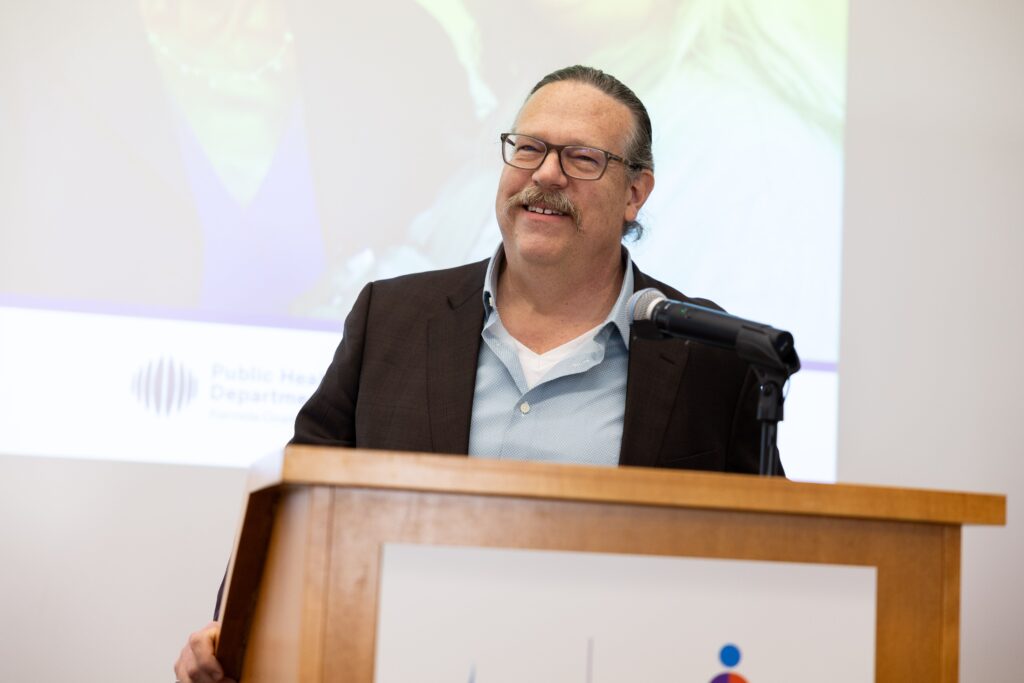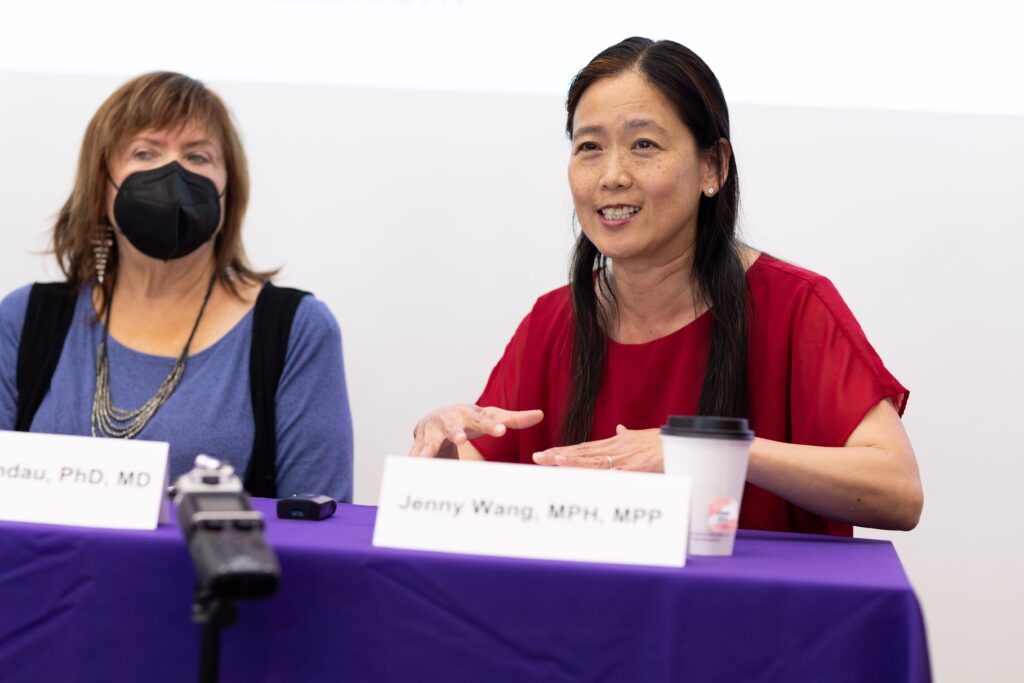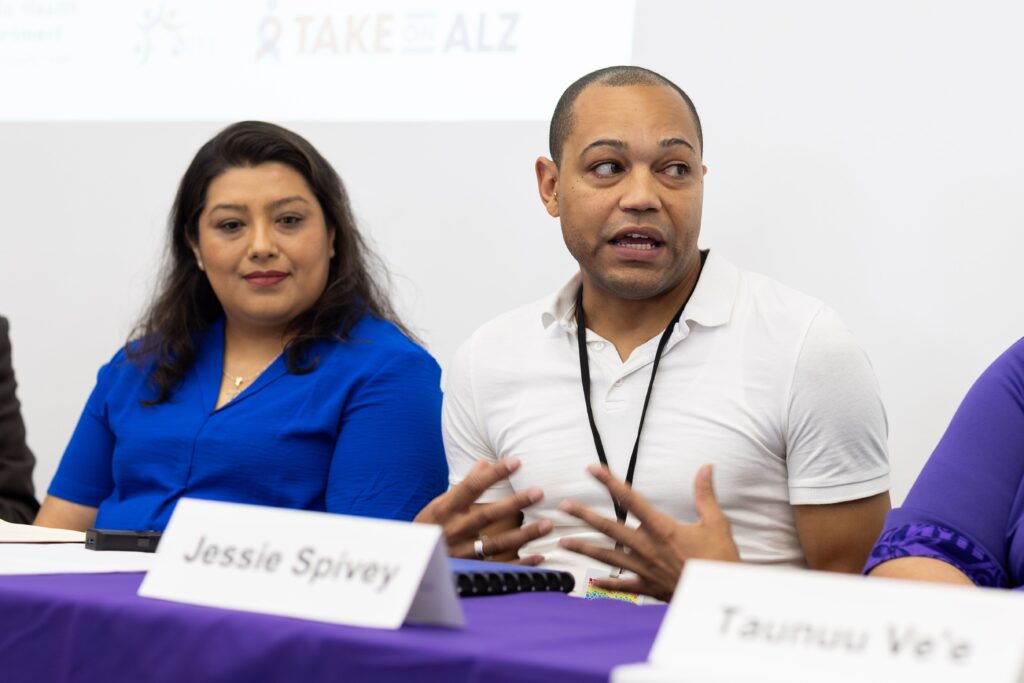On May 8, 2024, medical and public health experts and community leaders gathered for the California Department of Public Health’s new statewide campaign, Take on Alzheimer’s community event in Oakland, CA. The panel of medical, and public health experts, as well as community leaders discussed how Alzheimer’s Disease and related dementias (ADRDs) affect people in Alameda County and emphasized the importance of prevention and early screening.
Data released from CDPH in 2024 identifies Alzheimer’s disease as the second leading cause of death in California. The number of California residents living with ADRD is expected to double by 2040. There are actions everyone can take to protect themselves and their loved ones. For information, visit TakeOnAlz.com.

“California’s projections indicate that by 2040, the number of people living with Alzheimer’s will more than triple for Californians who identify as Latino/x and nearly triple for those who identify as Black/African American. By educating Californians about the prevalence of Alzheimer’s Disease, we can build understanding around the relevant risk factors, reduce the negative impacts of stigma and work towards the goal of helping individuals improve their brain health.Take on Alzheimer’s is going to create easily accessible and informationally accurate, and most importantly, culturally appropriate and inspiring conversations about memory loss and late life.”

- This is a growing public health crisis that needs our attention now. The Alameda County Public Health Department is thrilled about CDPH’s Take On Alzheimer’s campaign and the campaign-related community awareness and engagement sessions. Our goal is to partner with those who are most impacted and develop specific and equitable strategies to build a comprehensive system that supports Alameda County residents living with or at risk of developing Alzheimer’s disease and other related dementias and their caregivers in Alameda County.”

- “It’s most important to have partnerships with community organizations to allow people to have safe spaces to be able to talk openly and reduce the stigma. Ultimately, this will result in more people being screened and diagnosed earlier.”


































